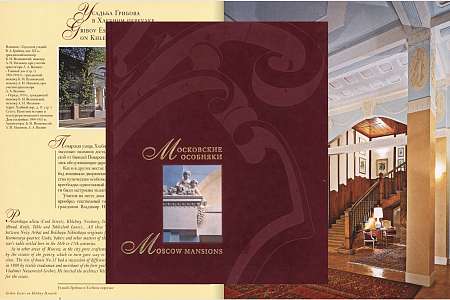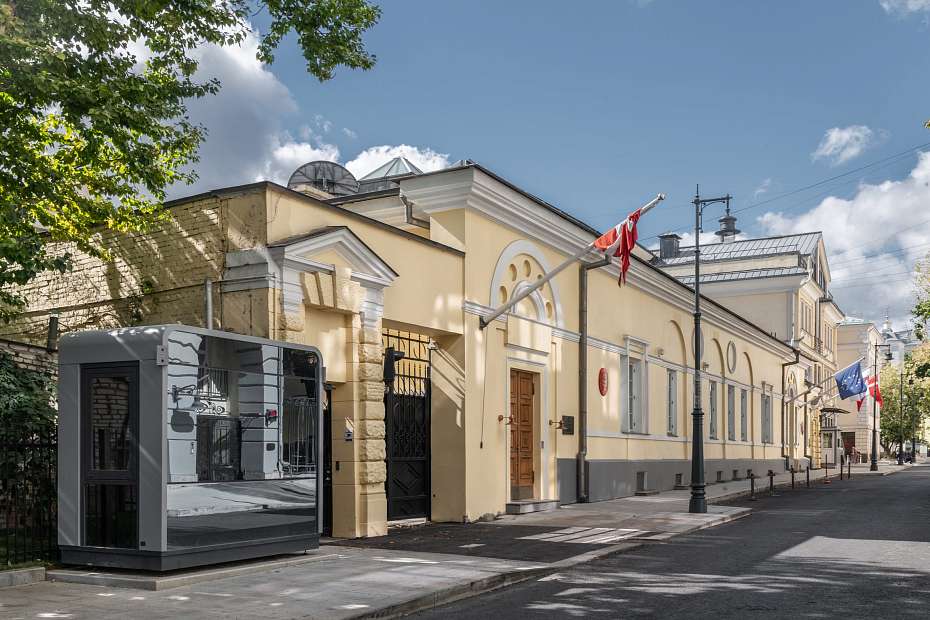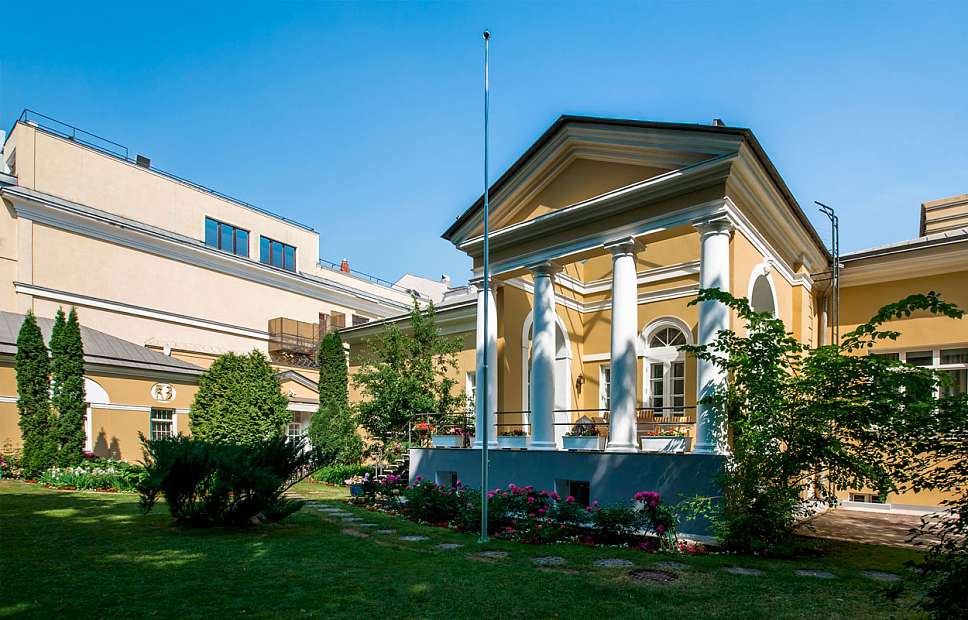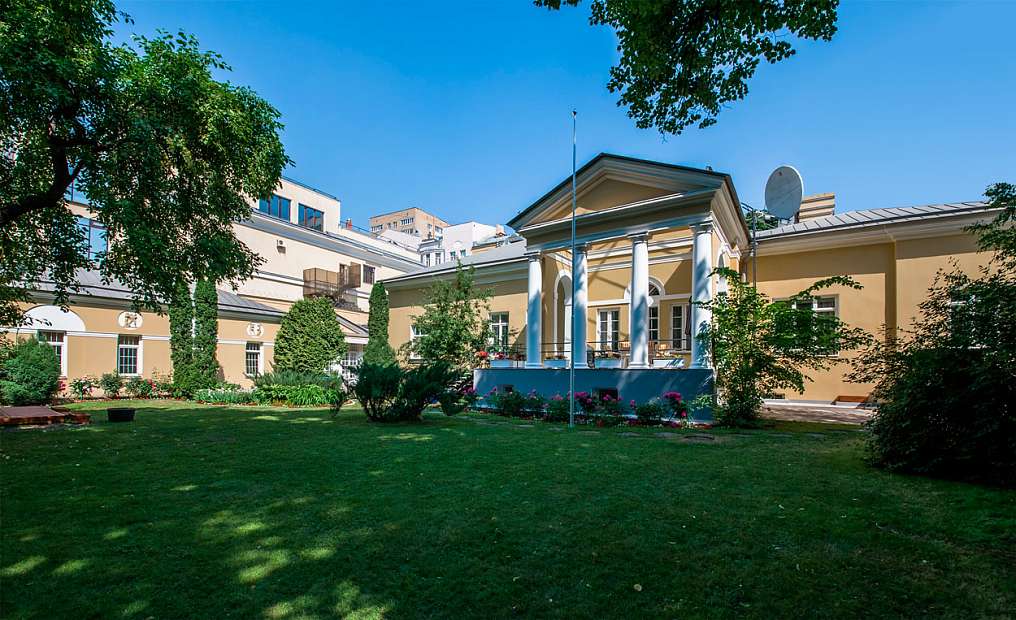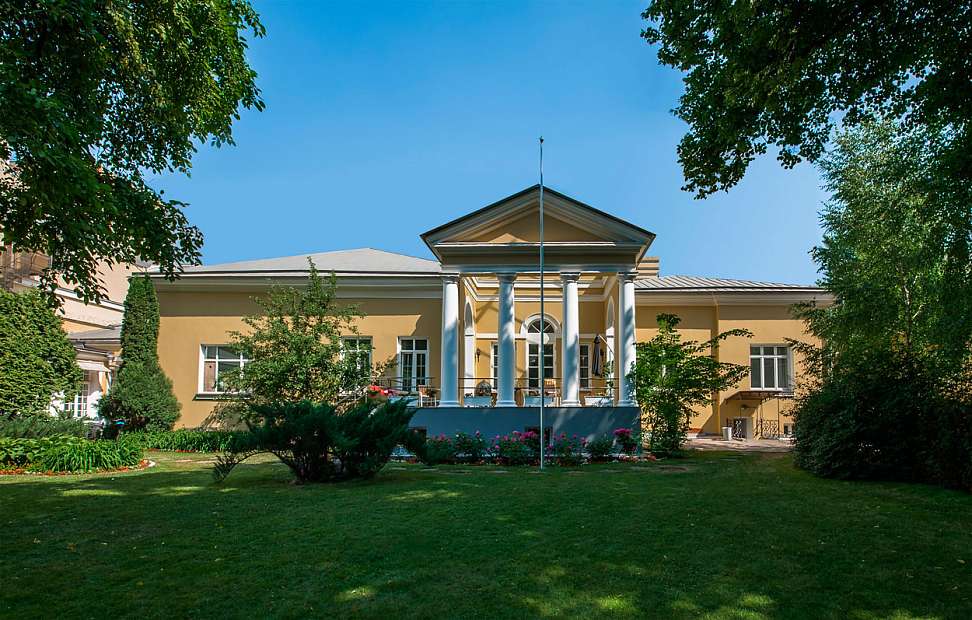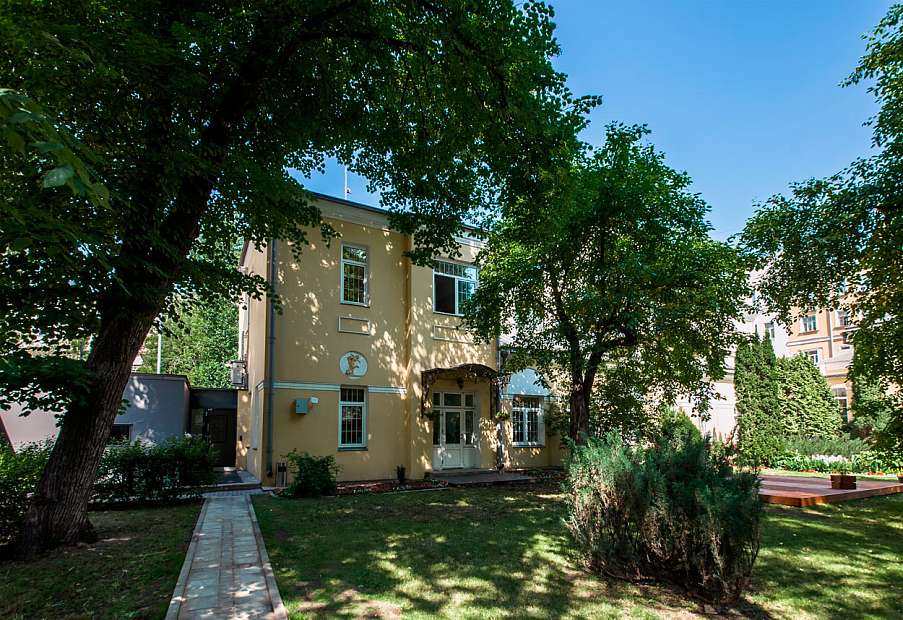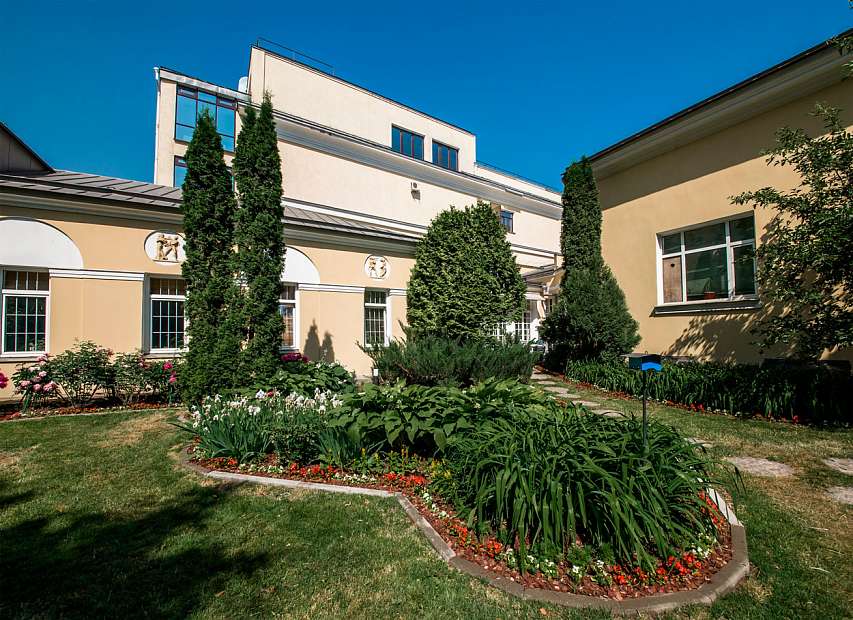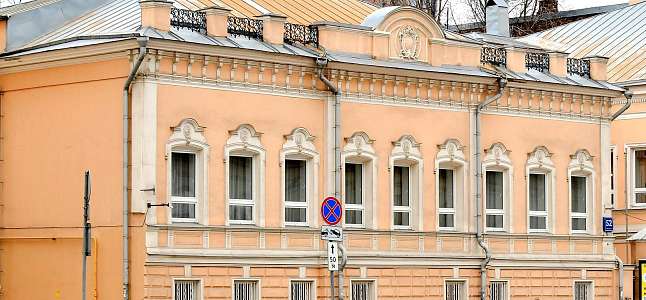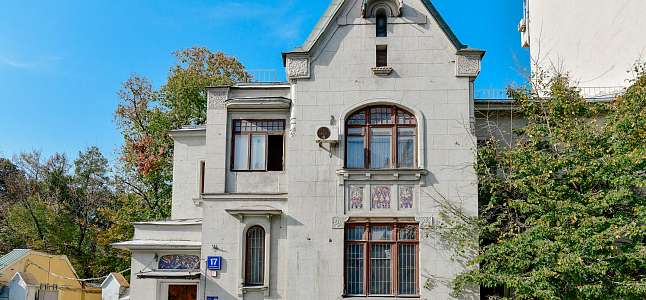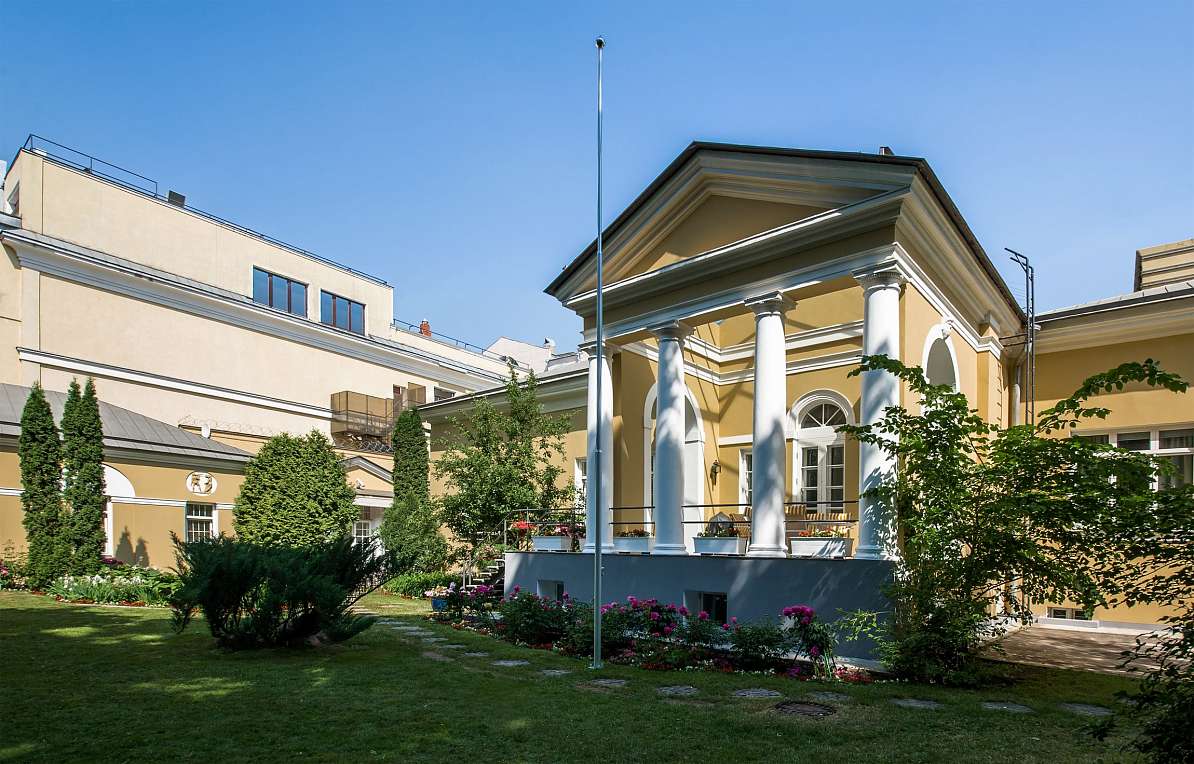
City estate of M.K. Morozova

The "genealogy" of this Moscow house dates back to Russian history and deserves a close attention. The right side of the house was built soon after the 1812 fire for Captain of the Guards Voeykov. Several decades have passed and the new owner – major Guryev – altered most of the interiors in line with his own taste. In 1905 his descendants decided to decorate the building with a respectable front anteroom.
Several years later the house was purchased by the famous philanthropist Margarita Kirillovna Morozova, widow of Moscow merchant. After the death of her husband she sold her pompous palace in Smolensky Boulevard, simultaneously parting with a large collection of famous paintings. Nevertheless, Margarita Kirillovna kept her favorite paintings authored by Serov, Vrubel, Korovin – but they required a special room.
In order to embody her conception, Mrs. Morozova invited a young architect Ivan Vladislavovich Zholtovsky. It was him who decided to place the grand hall in such a way to allow a plenty of light practically all day long. The walls of the hall were painted in gentle pink color, it was decorated with pilasters imitating lilac marble, a cornice with floral ornament and round medallions.
According to the visitors of Morozova's parlor, among whom Andrey Bely was a frequent guest, the mansion was a rare example of good taste. The poet, as well as many others, was attracted by the atmosphere of Russian manor house – the spirit of the epoch passing away.
The house of Margarita Kirillovna Morozova was perhaps one of the first orders to Zholtovsky. Later, during the Soviet time, he became a widely recognized founder of socialist realism in architecture, participating in construction of the buildings in Leninsky Avenue.
From the beginning of the 19th century the manor still has an outbuilding with columns in the style of classicism and interior garden with an Empire terrace over the entrance. The front dining-room with sky-blue walls and the library all date back to mid-19th century. The decoration of the main hall was made by Zholtovsky – the architect chose a shape of Roman rotunda surrounded by eight Dorian columns.
